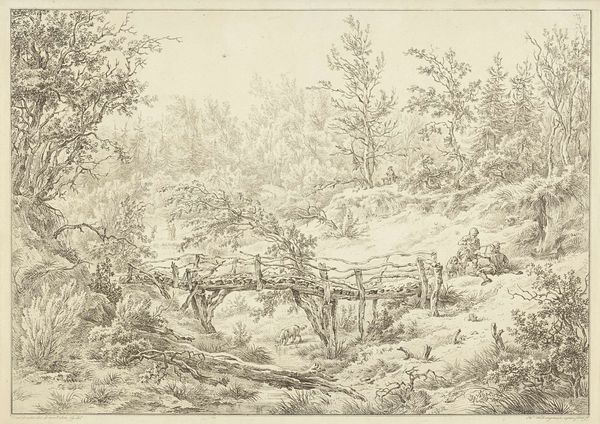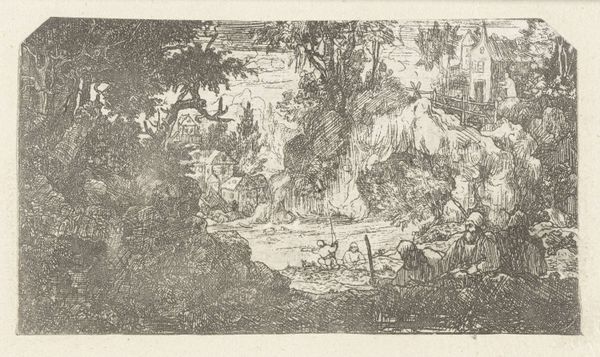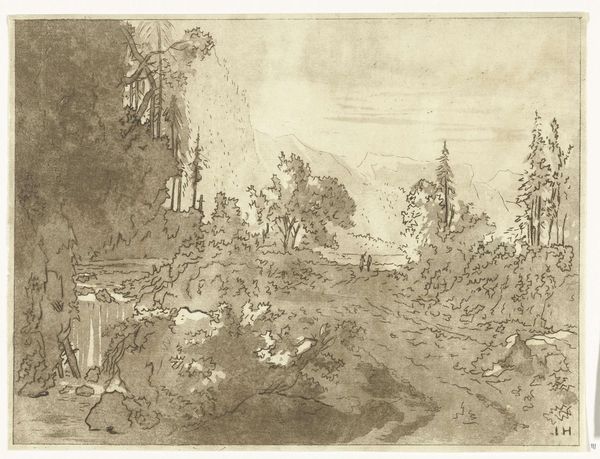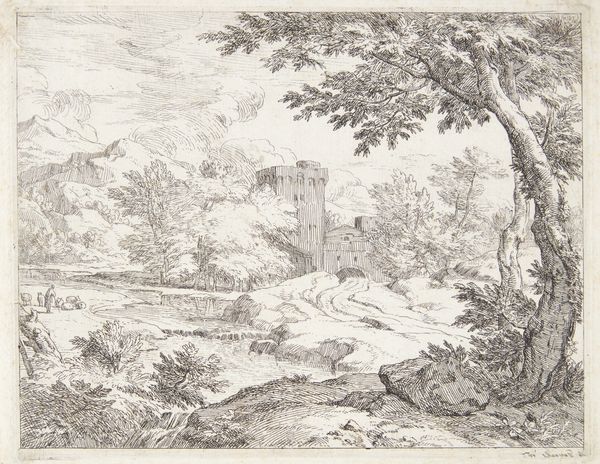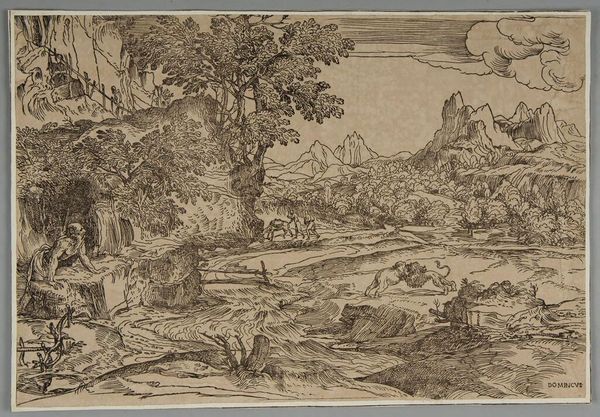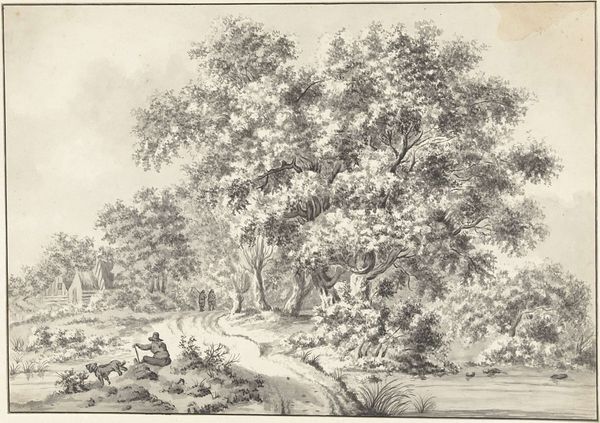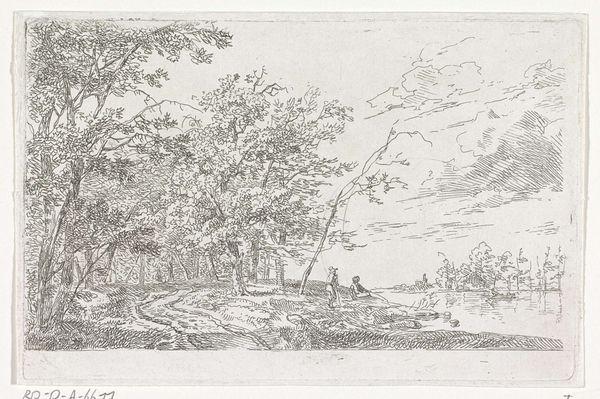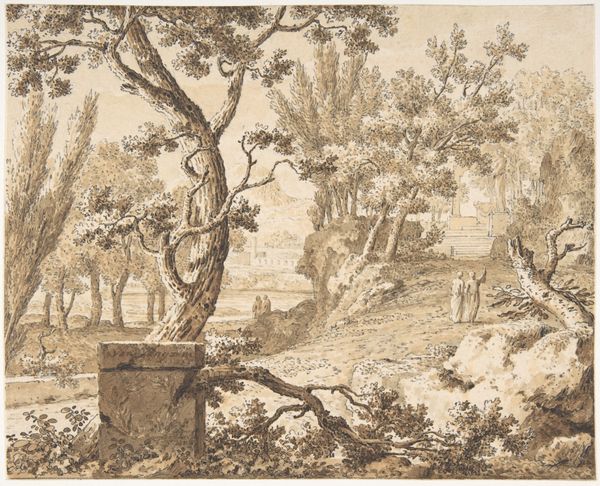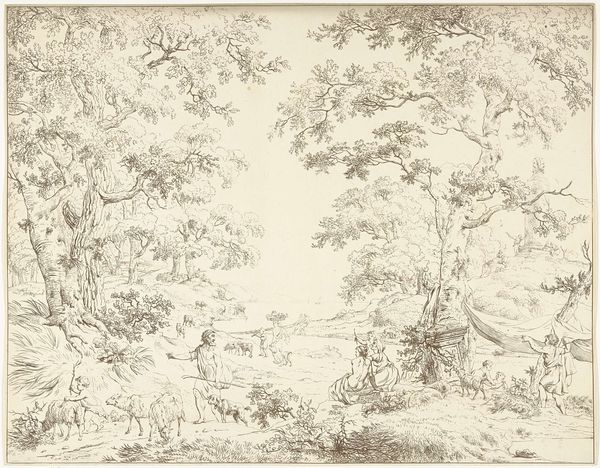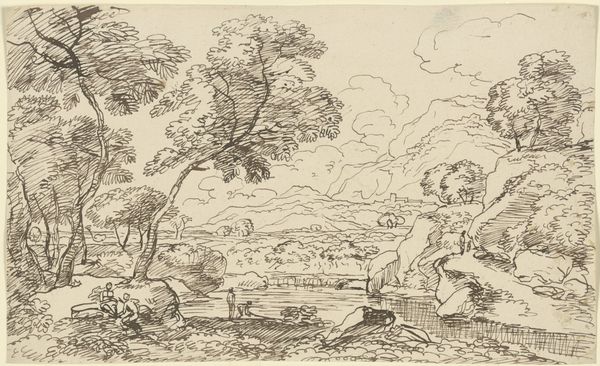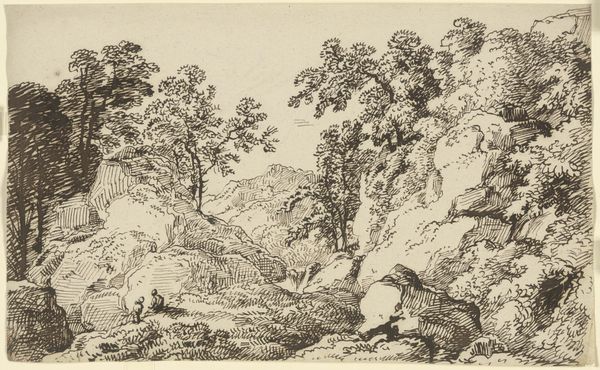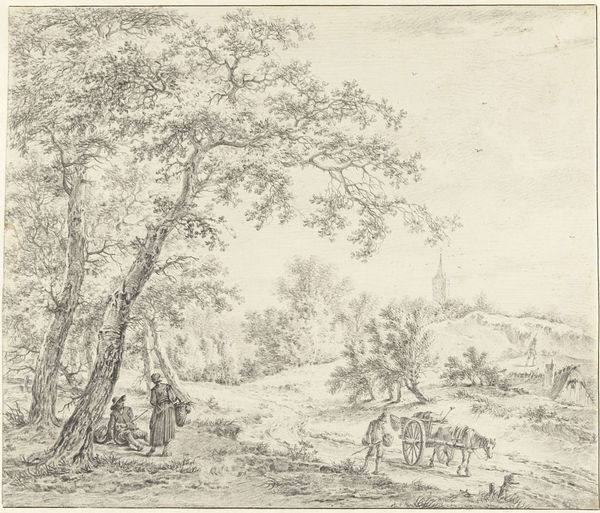
drawing, ink
#
drawing
#
pen drawing
#
landscape
#
classical-realism
#
figuration
#
line art
#
form
#
ink line art
#
ink
#
line
#
history-painting
Dimensions: height 361 mm, width 463 mm
Copyright: Rijks Museum: Open Domain
Editor: We're looking at Hermanus Fock's "Arkadisch landschap met voetbadende vrouw," created sometime between 1781 and 1822. It’s an ink and pen drawing. The intricacy is stunning, almost dreamlike. How do you interpret this tranquil scene? Curator: Oh, it whispers to me of stolen moments, doesn’t it? It feels like stumbling upon a private world hidden within nature. The delicate lines create a sense of both detail and distance. You’ve got this pastoral, idealized vision – women bathing, sheep grazing – all classic symbols of Arcadia. Notice how the architecture is nestled into the hills. Where does the real end, and the imagined begin? What stories do you imagine occurring within that space? Editor: That blending of real and imagined makes it feel timeless, like a scene that could be happening now, or centuries ago. Is that the mark of the Classical Realism style? Curator: Exactly! The "classical" bit gives it a historical anchoring. It evokes a Golden Age, a past idealized with a wink and a nudge. Yet, Fock doesn't get caught up in perfect replication. This isn't photography; it's a re-imagining. How do you think the use of simple line drawing contributes to this sense of dreamlike fancy? Editor: Well, the lines are so clean; there is a crispness to the image but at the same time the technique doesn't offer much in the way of tonal qualities. The lack of bold darkness feels softer to me. Curator: Precisely! And it does speak to the culture of the period: there's this longing for simplicity but crafted with exquisite skill and intention. Think Marie Antoinette playing shepherdess, with silk frocks under her smock. A beautiful contrast of natural and artificial... It gives us a peek into the thoughts of a time passed. Editor: It’s funny how something so simple, just lines on paper, can reveal such complex ideas about nature, history and the imagination. Curator: And that, my friend, is the delicious power of art! It lets us eavesdrop on history, to ponder who we once were and, dare I say, where we are going!
Comments
No comments
Be the first to comment and join the conversation on the ultimate creative platform.
